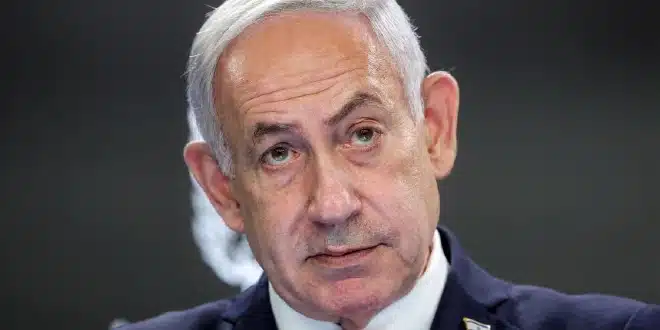Prime Minister Benjamin Netanyahu is pressing forward with plans to expand Israel’s military operation in Gaza City, despite strong domestic opposition and widespread international criticism. The move comes as Israel escalates preparations for a major offensive in one of the most densely populated areas of the territory.
Preparations for Expanded Operation
On Thursday, the Israeli military began contacting medical staff and international organizations in northern Gaza, urging them to leave ahead of the anticipated assault. The calls followed Wednesday’s announcement of 60,000 new reservists being called up, alongside an extension of service for 20,000 already in uniform.
Netanyahu is expected to finalize approval for the campaign during a security cabinet meeting later in the evening, according to an Israeli official. The decision coincides with continued Israeli strikes across Gaza, where hospitals reported at least 36 deaths on Thursday alone in central and southern areas.
Israeli forces are already conducting operations in the Zeitoun district of Gaza City and Jabaliya refugee camp, laying the groundwork for what military officials suggest could be a full-scale offensive in the coming days. While much of Hamas’s senior leadership has been killed, the group continues to launch rocket fire and mount attacks, highlighting the persistence of its military presence.
International Condemnation and Humanitarian Concerns
The prospect of a fresh assault has intensified global concern over the already dire humanitarian crisis in Gaza. Aid agencies have warned of dwindling access to food and medicine, while the United Nations has repeatedly demanded an immediate ceasefire.
U.N. Secretary-General Antonio Guterres renewed his appeal from Japan on Thursday, urging restraint. “It is vital to reach immediately a ceasefire in Gaza, and the unconditional release of all hostages to avoid the massive death and destruction that a military operation against Gaza City would inevitably cause,” he said.
Both Qatar and Egypt, with U.S. support, have tried to mediate temporary truces throughout the nearly two-year conflict, but talks have repeatedly collapsed without a lasting solution.
Protests in Israel and Gaza
Protests broke out on both sides of the conflict on Thursday. In Gaza City, hundreds gathered in the ruins of destroyed neighborhoods, waving Palestinian flags and carrying signs that read “Save Gaza” and “Stop the war.” Many demonstrators, including women and children, called for an end to the fighting and to what they described as forced displacement.
“Twenty-two months … it’s enough. Enough death. Enough destruction,” said Bisan Ghazal, a displaced resident from eastern Gaza City. Amjad Al-Shawa, who heads the Palestinian NGO Network, described the territory as “threatened with total destruction,” noting the loss of more than 10% of Gaza’s population and 85% of its infrastructure.
In Israel, families of hostages still held in Gaza staged rallies in Tel Aviv, demanding that the government prioritize negotiations over military escalation. Roughly 50 hostages remain in captivity, with Israel estimating that only 20 are still alive.
“Forty-two hostages were kidnapped alive and murdered in captivity due to military pressure and delay in signing a deal,” said Dalia Cusnir, whose brother-in-law is among those still missing. Another protester, Bar Goddard, whose father’s body remains held by Hamas, declared: “Enough to sacrifice the hostages. Enough to sacrifice the soldiers. Enough to sacrifice the younger generation in the country.” More demonstrations are planned in Tel Aviv overnight.
Rising Civilian Toll
Hospitals across Gaza reported dozens of new casualties on Thursday, adding to a mounting death toll that has now surpassed 62,000 since the war began in October 2023. Shifa Hospital confirmed that 39 additional victims had died from Wednesday’s strikes in the north. In central Gaza, 19 people were killed, including displaced families seeking aid and individuals sheltering in schools.
Airstrikes near Khan Younis left at least eight people dead, while nine more were killed trying to access humanitarian supplies, according to Nasser Hospital. In Deir al-Balah, witnesses described how airstrikes destroyed over 100 makeshift tents housing displaced families. Fires spread rapidly through the camp, leaving families with nothing but ashes of their few remaining possessions.
“We are civilians, not terrorists. What is our fault, and what is the fault of our children, to be displaced again?” asked Mohammad Kahlout, who fled northern Gaza for what was supposed to be a designated safe zone.
The Hamas-run Health Ministry in Gaza reported that, in addition to those killed by strikes, at least 271 people—112 of them children—have died from starvation and malnutrition. The ministry does not distinguish between combatants and civilians, but international organizations, including the United Nations, consider its casualty data the most reliable available.
The Wider Context
The war erupted after Hamas’s October 7, 2023 attack on Israel, which killed around 1,200 people, mostly civilians, and resulted in the abduction of 251 hostages. Although many captives have been released during previous ceasefires, Hamas has insisted that the remaining hostages will only be freed in exchange for a permanent truce and an Israeli withdrawal.
With Netanyahu pressing ahead with a new offensive and international mediation faltering, the situation remains perilously unstable. The looming assault on Gaza City is expected to bring even higher casualties and deepen the humanitarian catastrophe, while fueling further protests both inside Israel and across the globe.


